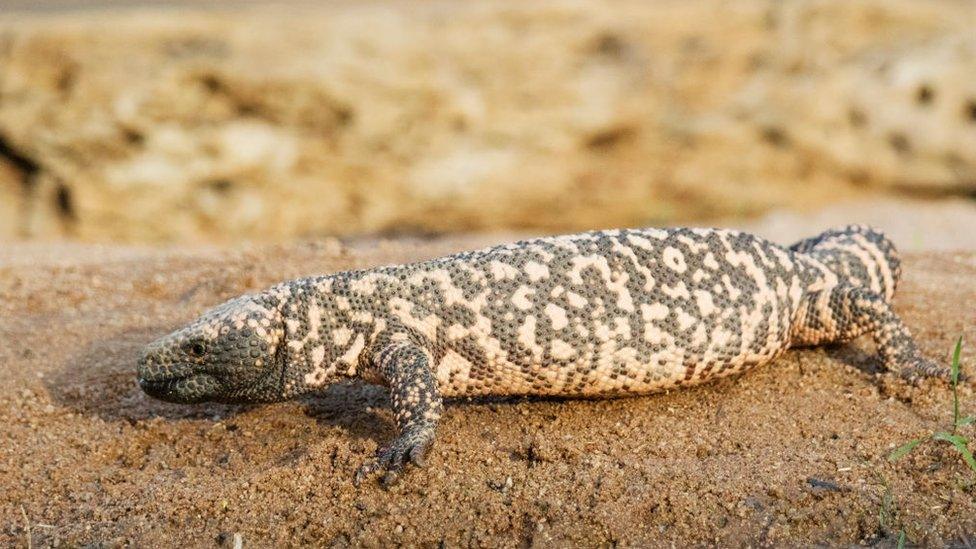Colorado man dies after being bitten by pet Gila monster
- Published

It is illegal to own a Gila monster in Colorado without a licence
Authorities in Colorado have confirmed the death of a 34-year-old local resident four days after he was bitten by one of his two pet Gila monsters.
The creatures are venomous reptiles native to the south-western United States. Their bites are not normally fatal to humans.
But an expert told the 大象传媒's US partner CBS News that the victim may have suffered an allergic reaction.
The last human death from such a bite is believed to have been in 1930.
That incident "was not even a medical journal case," Dr Nick Brandehoff, a medical toxicologist and reptile expert, told CBS News Colorado.
"The vast majority of bites cause local swelling and bleeding," he said.
Dr Brandehoff added that last week's death "highlights that any venomous animals should be respected".
The Jefferson County victim - who has not been identified - reportedly owned two of the carnivorous reptiles.
Gila monsters are the largest lizards in the country and can grow to about 22 inches (56cm) in length, according to the Smithsonian Institution. They are named after the Gila River.
The creature that bit the man on Monday 12 February was a juvenile that measured about 12 inches long.
He was taken to hospital and died last Friday.
The Jefferson County coroner's office has performed an autopsy but is conducting additional toxicology testing to determine a precise cause of death.
It is illegal to own Gila monsters in the state without a licence. The man also owned tarantulas, which are not illegal to own.
A Colorado Parks and Wildlife criminal investigator told CBS his team had been asked to remove the two Gila monsters from the home.
The desert-dwelling lizards will be taken to a wildlife rehab in another state, but the animal that bit the man will first be transported this week to a lab at the University of Northern Colorado.
There, its venom will be extracted and studied to learn more about why its bite led to its owner's death.
Related topics
- Published28 October 2011
- Published20 October 2011
- Published11 June 2018